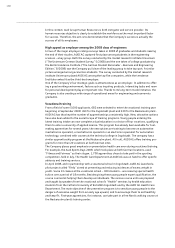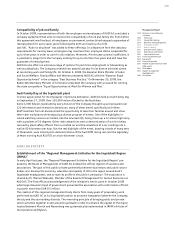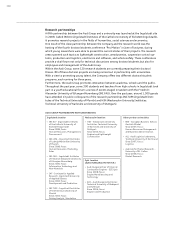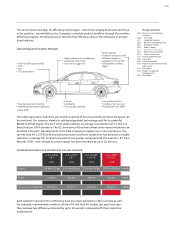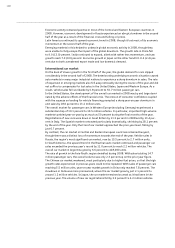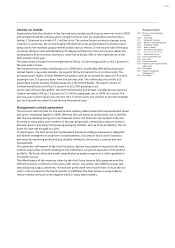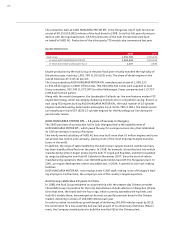Audi 2008 Annual Report Download - page 165
Download and view the complete annual report
Please find page 165 of the 2008 Audi annual report below. You can navigate through the pages in the report by either clicking on the pages listed below, or by using the keyword search tool below to find specific information within the annual report.
146
Furthermore, with its e models, the Audi brand has been able to offer its customers a particu-
larly attractive way to travel, which is not only dynamic but also easy on the environment. These
include the 77 kW (105 hp) Audi A3 1.9 TDI e and the 100 kW (136 hp) Audi A6 2.0 TDI e. With
an average consumption of 4.5 and 5.3 liters of diesel fuel over 100 kilometers respectively,
these vehicles achieve impressively low CO2 emissions of 119 and 139 g/km respectively.
What’s more, a large number of Audi models – from the Audi A3 1.4 TFSI to the sporty Audi TTS
Roadster and the new Audi Q5 3.0 TDI – already comply with Euro 5 emissions legislation that
will not come into effect until September 1, 2009.
The driver’s crucial role
A person’s individual driving style affects the fuel efficiency and emissions of a car by as much
as 30 percent. That means that a driver is just as critical to the overall concept as the vehicle’s
technology. Innovative gearshift indicators, which already come as standard in the e models,
indicate how overall fuel efficiency can be increased. These techniques will be refined in all of
the Audi brand’s car lines over the next few years in an effort to actively coach the driver.
The efficiency runs held in summer 2008 were an impressive demonstration of what can be
achieved with the existing technology already available as standard on every Audi brand vehicle.
11 teams completed the 1,650 kilometer circuit between Basel and Vienna in normal produc-
tion versions of the Audi A4 2.0 TDI without having to stop to refuel. The winners achieved an
average fuel consumption of 3.32 liters of diesel per 100 kilometers, easily undercutting these
vehicles’ standard consumption of 5.1 liters. That equates to outstandingly low CO2 emissions
of 88 g/km.
The prospects of the Audi brand for sustainable mobility
Diesel and gasoline engines will remain the bedrock of vehicle drive systems in the coming
years. In order to further realize improvements in the fuel efficiency and emissions figures of
cars in the short term, continued optimization of these drive concepts will be of key importance.
For this purpose, the Audi Group systematically implements the technologies of its modular
efficiency program. The Company vividly demonstrated its potential at the Paris Motor Show in
the near-production efficiency study Audi A4 TDI concept e. Equipped with an 88 kW (120 hp)
2.0-liter TDI engine and a wide array of specific features, such as automatic start/stop and new
thermo-management, this car covers 100 kilometers on an average of just 3.99 liters of diesel
fuel. That represents CO2 emissions of just 105 g/km.
Over the medium term, alternative fuels and drive systems will be developed to complement
classic drive concepts. The Audi Group has already been using the ultra-pure diesel fuel GTL
(gas-to-liquid) in the Audi R10 TDI diesel racing car for a number of years now, and is manufac-
turing this fuel jointly with a venture partner. The starting material is natural gas and the diesel
fuel obtained not only generates much less pollution than conventional diesel, there is the
added benefit that CO2 emissions along the entire manufacturing chain are reduced by five
percent. The Company and its partners are also working hard on BTL (biomass-to-liquid) tech-
nology, which is currently in a pilot phase. This harbors the potential of cutting CO2 emissions
by as much as 95 percent. Although such fuels will only be able to cover a small portion of the
overall demand in the foreseeable future, they will help to unlock alternatives that do not com-
pete with food production and meet all the performance requirements of modern engines.




